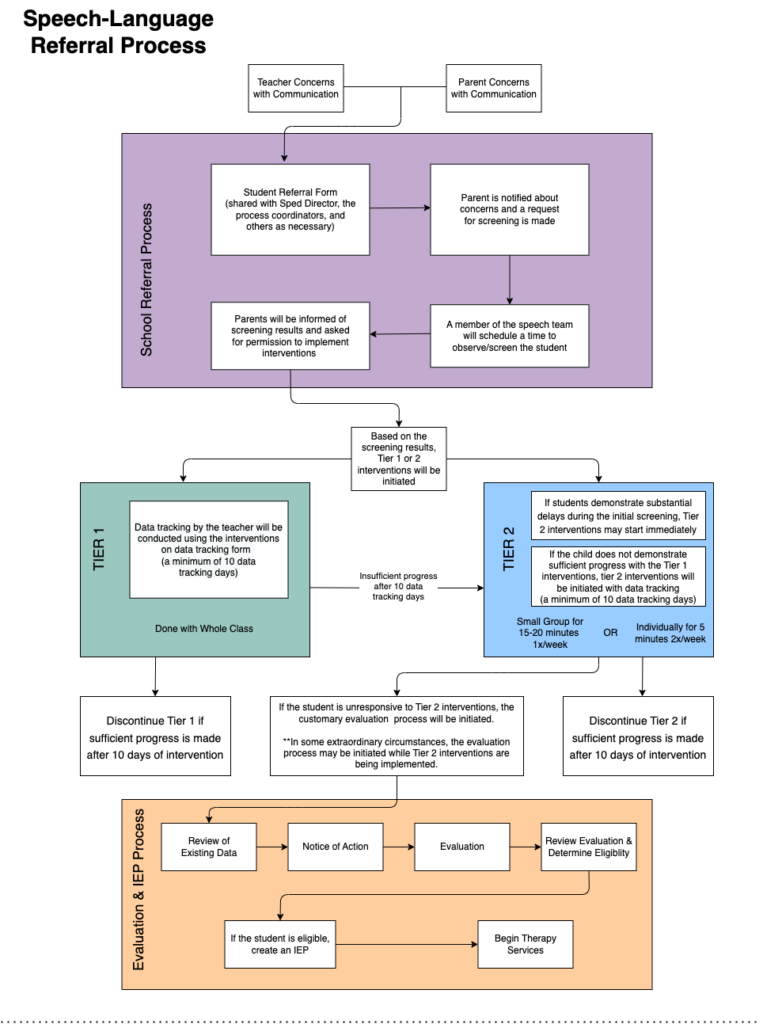In our previous discussion, we delved into the intricacies of Response to Intervention (RTI) concerning Speech and Language concerns. Today, we’re revisiting the topic to provide fresh insights and clarification on the evolving landscape of RTI. The aim is to strike a balance between formality and approachability.
When completing an evaluation to determine eligibility, a fundamental question arises: What Intervention Strategies were Used Prior to Referral? As of now, there are still no provisions in the guidance from DESE allowing districts to bypass interventions. However, the absence of laws or rules governing the model of intervention each district provides remains a significant challenge.
Key Questions Resurface:
- What interventions must be implemented?
- How long should interventions continue?
- What constitutes significant progress as a result of interventions?
- Who is qualified to provide interventions?
- How is progress reported during interventions?
- What role does parent involvement play in interventions?
In a landscape where state agencies offer rules with limited guidance, the ambiguity prompts each district to interpret and implement these rules independently.
Best Practices: Crafting a Written Plan
It is considered best practice for districts to have a written plan on how they interpret and implement rules. Below, we present the Second Mile School Therapy approach to RTI for Speech and Language concerns as a benchmark for establishing effective intervention strategies.

FAQs Revisited:
What is the difference between Tier 1 and Tier 2 interventions?
Tier 1 interventions, led by regular education teachers, cater to the entire class. For example, providing multiple-choice options for students to answer questions benefits the whole class.
Tier 2 interventions, typically led by specialists, focus on small groups or individual students. These interventions are shorter in duration, lasting 15-20 minutes in small groups or 5-10 minutes individually once or twice per week.
Refining the Criteria: Which Students Should Start at Tier 1?
Students displaying 1-3 articulation or phonology errors with mild to moderate impact on speech clarity. Students stimulable for correct production with minimal cues. Students exhibiting mild language concerns in 1-3 areas with minimal impact on academic performance.
Direct Path to Tier 2: Students may proceed directly to Tier 2 intervention if they meet one or more of the following criteria:
- Multiple articulation/phonological errors impacting speech intelligibility (rated at 50% or less).
- Red flags for childhood Apraxia of speech.
- Moderate to severe language concerns in multiple areas significantly impacting academic performance.
Addressing Concerns: Are interventions a replacement for Special Education or related services?
No, interventions are not a substitute but rather intense, short-term measures to help students improve in areas affecting academic performance. RTI should not delay or deny a timely initial evaluation for special education eligibility.
Addressing Timeliness: Isn’t ten days of intervention too short for a child to make progress?
No, interventions are designed to be intense and short-term. Quick data collection should reveal measurable progress. If progress is not observed promptly, it is advisable to move to the next step in the intervention/evaluation process.
Some districts choose to extend each intervention level up to eight weeks. While feasible, this approach may risk delaying a child’s access to Special Education services, potentially compromising a full year of support. Balancing intensity with timeliness is crucial for the effectiveness of RTI strategies.
In this revisit, we aim to provide a comprehensive understanding of RTI for Speech and Language concerns, emphasizing the importance of clear guidelines and timely interventions. As the educational landscape evolves, staying informed and adapting strategies remains key to ensuring the success of all students.




